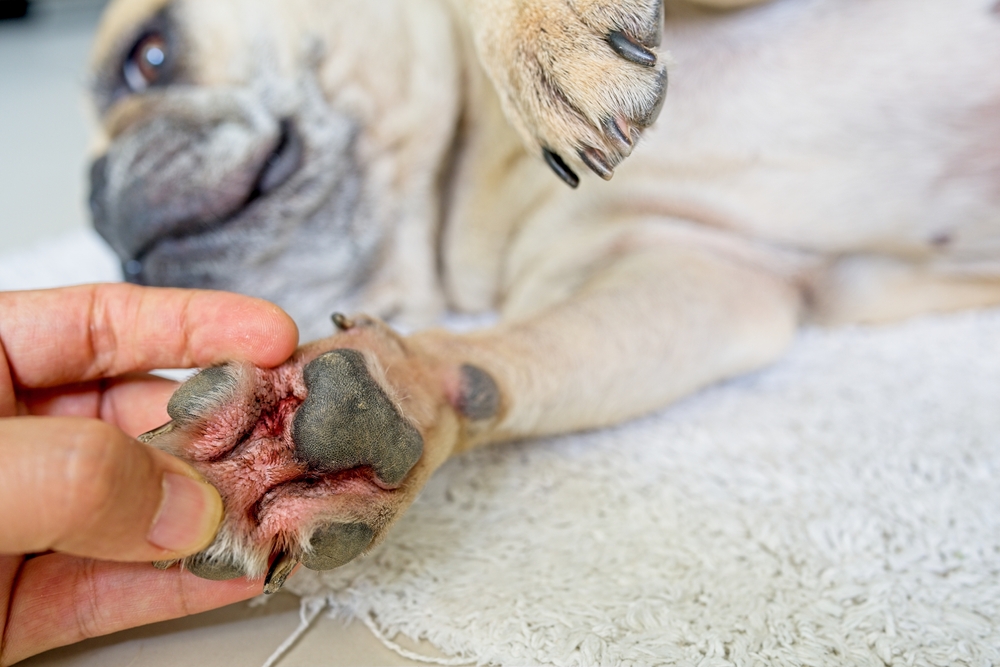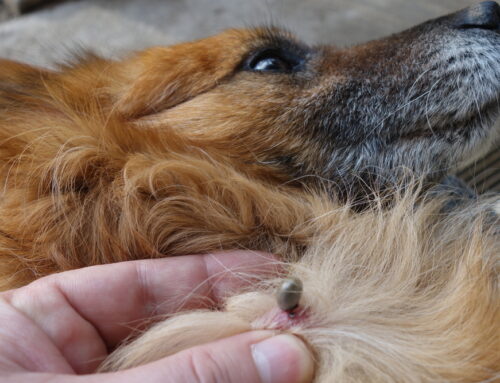Pets bring joy, companionship, and sometimes a little chaos into our lives. They also bring the occasional itch and scratch that can drive both pet and owner up the wall. At Oliver Animal Hospital, your friendly vet in South Austin, we see our fair share of pets with skin issues. So, let’s dive into some of the most common pet skin conditions that could be bugging your four-legged friend and how you can help them feel their best.
Pet allergies: The sneaky saboteurs
Just like people, pets can suffer from allergies. The two main types pets encounter are seasonal allergies and food allergies:
- Seasonal allergies — Seasonal allergies commonly cause pet skin conditions but this cause often goes overlooked. These typically occur during the spring and fall when pollen is on the prowl. If your pet is itching more than usual, sneezing, or has red, watery eyes, they might be reacting to something in the environment.
- Food allergies — Unlike seasonal allergies, food allergies can be a year-round issue. Common culprits include beef, dairy, wheat, and chicken. Signs often manifest as persistent ear infections, gastrointestinal (GI) issues, or skin problems.
Mange: A mite-y problem for pets
Mange sounds like something out of a medieval tale, but it’s a very real and itchy condition caused by tiny mites. These microscopic menaces burrow into your pet’s skin, leading to intense itching, redness, and hair loss. The two mange types that affect pets are sarcoptic, which is highly contagious, and demodectic, which is not. Either way, having mange is no picnic for your pet. If you suspect mange, a visit to Oliver Animal Hospital can help diagnose and treat this pesky problem.
Ringworm: A fungi in pets
Despite its name, ringworm isn’t a worm at all; it’s a fungal infection that affects the skin, hair, and nails. This common pet skin condition presents as circular, bald patches that can be red and scaly. Ringworm is a zoonotic disease, meaning your pet can get it from other animals or even from people, making it a family affair nobody wants. The good news is that with proper treatment, those unsightly patches can be cleared up, and your pet will be back to their furry self in no time.
Fleas: The tiny terrors that affect pets
Fleas are the bane of many pet owners’ existence. These tiny terrors can cause serious itching and discomfort. But the fun doesn’t stop there; fleas can also lead to secondary skin infections and transmit tapeworms. Flea prevention is key. Regularly using flea control products can keep your pet and home flea-free and your sanity intact.
Hotspots: A pet’s fiery foe
Hotspots are localized areas of inflamed and infected skin. They often start with a small irritation but can quickly become a big problem if your pet licks, bites, or scratches the area obsessively. These angry red spots can pop up seemingly overnight and are a common reason for emergency vet visits. Keeping your pet’s skin clean and dry can help prevent hotspots, and prompt veterinary care can get these painful itchy spots under control before they spread.
Yeast infections: A pet’s uninvited guest

Yeast infections are more than just a nuisance; they can be downright uncomfortable for your pet. Often occurring in warm, moist areas, such as ears, paws, and skin folds, these infections cause itching, redness, and a distinct musty odor. Regular grooming and keeping those problem areas dry can help keep yeast at bay. If you notice your pet smelling like an old gym sock, they should have a veterinary checkup, as a yeast infection is a pesky pet skin condition that can be managed through good hygiene.
Understanding these common pet skin conditions can help you keep your pet happy and itch-free. If your pet is dealing with any skin issues, don’t hesitate to reach out to Oliver Animal Hospital, your trusted vet in South Austin. Our knowledgeable team is here to help your pet live their best, itch-free life. Schedule an appointment online or call us today and let us put the wag back in your pet’s tail!







Leave A Comment